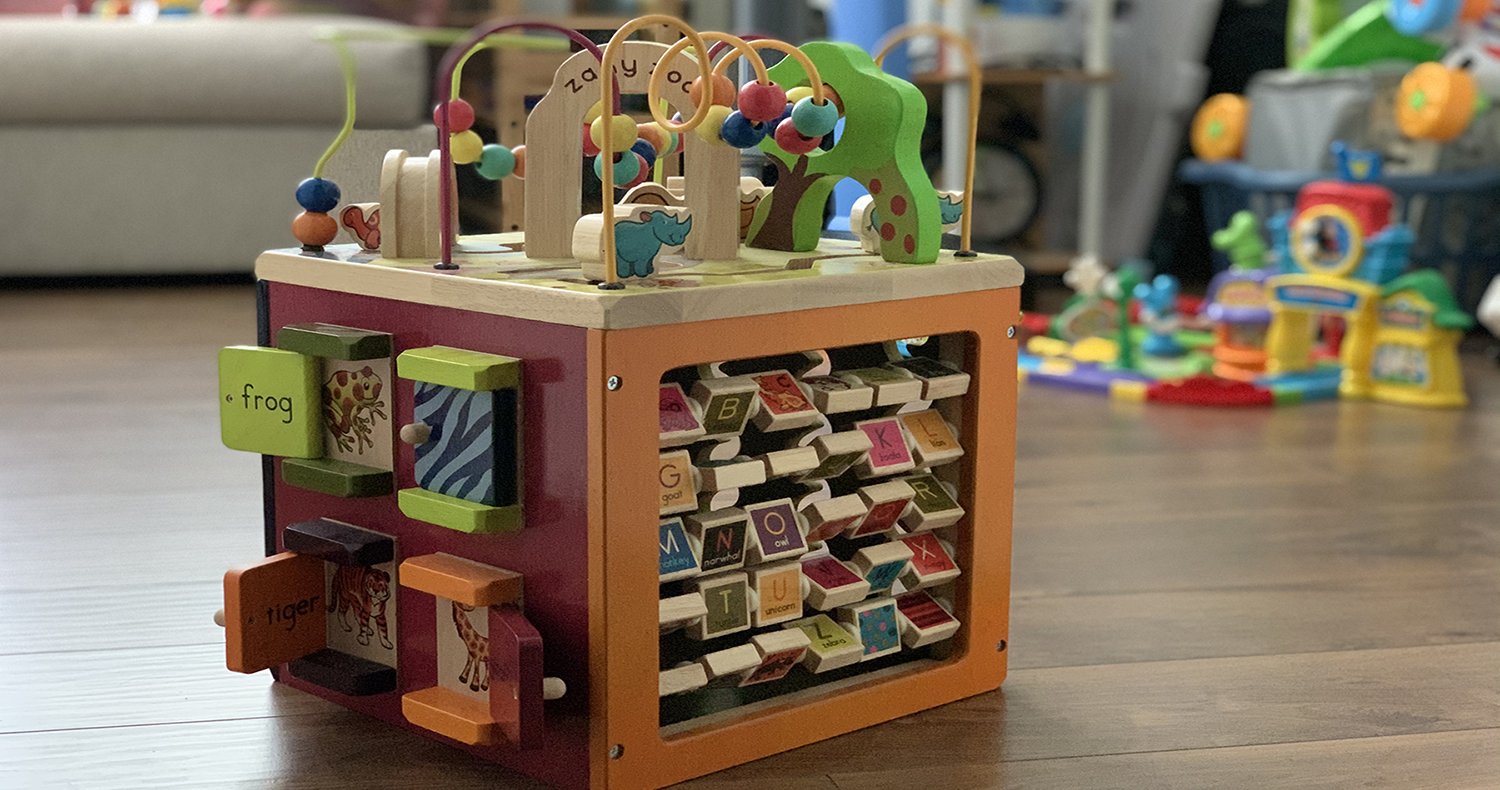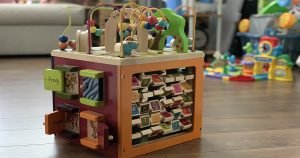In regards to wooden activity cubes, we have the Battat cube for our little one. We’ve had the cube since she was 6 months.
Around that time, she was getting a little more curious about the world and everything surrounding her. The cube piqued her interest as she would observe it and, at times, interact with the cube.
As she got older, she started playing with it, how it should be played with, and using the wooden activity cube to boost herself up to stand.
Then she started picking up on basic knowledge like numbers, letters, shapes, colors, and animals. Owning the activity cube made learning and remembering engaging and entertaining.
Preference
It can be overwhelming trying to shop for the perfect activity cube that produces limitless entertainment value while providing the best educational and development utility.
You have options, and that’s a blessing and a curse. Options mean you can choose what you want, but it also means that if there are that many options, which one should you choose? (I’ll later explain why I chose the Battat wooden activity cube in a different section)
You should pick what you prefer regarding the color scheme, activities provided, and shape built. More or less, the construction of these activity cubes is well-built. Each listed activity cube is well-reviewed and highly rated.
So after going through the layers, the differences would be what each cube can provide. If you want more exposure to letters and numbers, you can go for the best recommended one. If you want more motor involvement, you can go with the Manhattan Toy Tree. There are no wrong picks!
Something to consider, maybe you want to select a specific activity cube based on the living situation. In our case, when our little one was born, we lived in a 350 sq. foot studio. Space was limited. In that situation, it would be appropriate to get the smaller activity cube as we barely had room for anything else.
Wood vs Plastic
In this post, we only offered recommendations for wooden activity cubes. Comparing plastic activity cubes to wooden activity cubes is like comparing apples to oranges.
Plastic activity cubes can be analog or electronic. Electronic cubes can provide interactive entertainment like music or phonics. Both plastic and wood activity cubes can co-exist without overlap.
There are distinct features when it comes to wood vs. plastic. Wooden activity cubes are more durable, heavier, and bigger in volume. Plastic activity cubes are usually lighter, prone to damage (withstanding the rigor of everyday play), and smaller.
Our Wooden Activity Cube Choice
The activity cubes listed here, more or less, are similar with different variations. Some cubes will have letters with animals, some have more bead mazes, some don’t have number activities on them, some are built differently, so the question remains, how do you pick?
If I own a daycare/kid play place, I’d get them all because each cube gives you different things. But if you only had to choose one, I’d pick the best recommended.
If you break down the categories of each activity cube (e.g., quality, construction, activities, safety, style, etc.), the Battat activity cube would rank top or near the top of each category. It’s the price point that puts this over the top, as it is priced better than most of the activity cubes offered.
Child Development
Most of the activity cubes recommended age is 12+ months. In our case, we got the activity cube around 6 months. We don’t expect the little one that young to be on their own playing with the activity cube. We wanted to expose the little one to colors, numeracy, letters, shapes, and different concepts to help their developing mind as they’re absorbing and growing exponentially.
Activity cubes can assist in the very early milestones of the little one’s young life. As they grow, they can practice on their motor skills and recognition abilities. Then it’s memory and other early milestone concepts. The cubes can also be kept for years, supporting their milestone journey.
Warning/Safety Tips
For every product, there are always safety/warning tips to keep in mind. Make sure the product is kid/toddler/baby friendly even if accidents occur. Like most of the activity cubes listed here, make sure the corners are rounded and smooth in the case of your little one colliding their head on to the cube.
When your little one is engaging with the activity cube, it should be supervised play, especially if they’re still in their early years developing their coordination and motor skills. Be wary of little ones using the activity cube to prop themselves up as the activity cube can tip over.
As they practice their fine motor skills, fingers can get caught on the little doors or bead mazes.
They can be at the point of wanting to put anything in their mouths or bite anything they can. Be sure that the activity cube is lead-free and non-toxic. Make sure all small pieces are put away until they acknowledge that toy pieces shouldn’t be in their mouths, chewed on, or swallowed.









